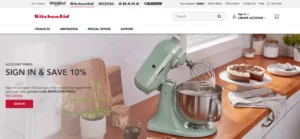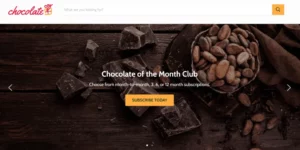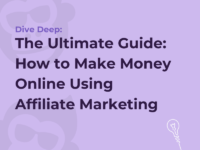Struggling to get views or clicks from your short-form affiliate content? Here’s why your Reels may be falling flat, and how to fix it fast.
With over 94% of internet users spending time on social media every month, it’s no wonder platforms like Instagram, TikTok, and YouTube Shorts have become goldmines for marketers. And in case there was any doubt, video is officially king.
Yes, Reels are everywhere, and for brands and creators using affiliate marketing to drive conversions, short-form video has become one of the highest-performing tools out there.
Looking for an affiliate tracking software to tap into affiliate marketing with minimum effort?
🚀 Try Tapfiliate free for 14 days!
In fact, video content is now the preferred format on social media, generating the most engagement across platforms like Instagram and TikTok. No surprise then that 95% of marketers say video is essential to their marketing strategy, up from 88% in 2024. Source
But here’s the catch: even if you’re pumping out a steady stream of Reels to promote your affiliate offers, it doesn’t mean people are watching. Or clicking. Or converting.
Social media users are moving fast like, thumb-swipe-in-under-3-seconds fast. And if your video doesn’t grab their attention right away? They’re gone. Next reel. Next creator. Next opportunity lost.
In this article, we’re breaking down exactly why your content might be falling flat in those first few seconds, and how to fix it. Plus, we’ll highlight a few brands who are absolutely crushing short-form affiliate video and what you can learn from them.
What is the 3-Second Drop-Off?
When it comes to branded content, users tend to favour short-forms, especially videos under 15 seconds. These short and snappy clips are easier to consume and are more suited to the fast-paced scrolling habits that many of us have fallen into.
Instagram Reels are one of the most popular tools for affiliate marketers. Since video content is the format that has created the most engagement, it is a prime opportunity for promotional content.
Whether you’re looking to show off a new product range, create an online shop, or encourage user-generated content, the opening frame of a reel needs to capture your audience in an instant, enticing them to stick around to see what else is to come. Without a catchy hook, viewers are likely to move on.
Not only does the 3-second drop-off mean users are not impressed with your reel, but it can also have a knock-on effect on how algorithms display your content. If the algorithm thinks that your video is not engaging to users, it is less likely to display it in a user’s feed.
How the 3-Second Drop-Off Impacts Affiliate Marketing
Suppose your Reels are driving traffic to an affiliate link, promoting a time-sensitive discount code, or supporting a brand collab. In that case, you only have a few seconds to hook your audience and keep them engaged long enough to convert.
Unlike brand awareness campaigns, affiliate Reels need to drive clear, trackable actions, such as clicks, sales, or sign-ups. And that means weak visuals, slow intros, or unclear messaging can kill performance before the link ever gets seen.
6 Reasons Your Affiliate Reels Are Losing Viewers
If you’re not seeing the results you hoped for following your social media efforts, it can be a disheartening outcome. There are various reasons that your reels may not be performing very well, so let’s delve into some of the common ones.
While most of the examples below come from big brands with full-on social teams, their strategies are exactly what affiliate creators can borrow and remix. Whether you’re filming with a tripod and ring light or just on your iPhone, these tactics work.
1. No captions for silent scrollers
Many social media users scroll through their feed without the sound on. Whether they are on their daily commute, lying in bed at night, or in a loud environment, videos without captions will automatically lose the attention of these silent viewers, as they will not understand what is happening. Additionally, your reels will also be inaccessible to those who struggle with hearing or are not fluent in the language.
Example: @notionhq nails this. They overlay bold, readable captions in every Reel, which not only helps silent scrollers stay engaged but also makes their how-to videos more accessible to non-native speakers and viewers with hearing impairments.
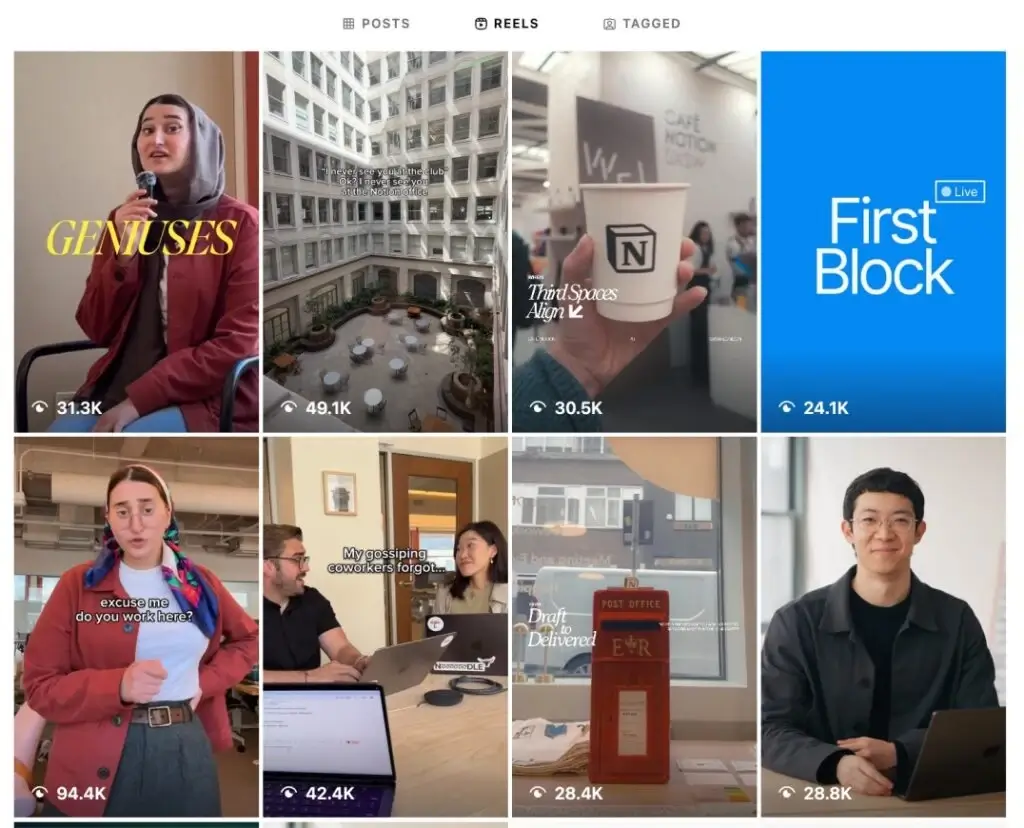

2. Using weak hooks
In affiliate content, your hook matters even more, because your viewer needs to understand the value of what you’re showing immediately, or they’ll never get to the CTA.
And since you only have three seconds to grab the attention of viewers before they decide whether to scroll on by, not having a good hook is bound to see a lot of drop-offs. Many reels open with an eye-catching visual and a bold statement or question that leaves users wanting to stick around to find out more.
Example: Duolingo’s social team opens most of their TikToks and Reels with chaos: the owl doing something absurd or a trending meme with a twist. It works. Their average watch time is high because people want to know what the heck is going on.
3. Poor quality filming
Visuals are everything when it comes to social media, so posting bad-quality reels can reflect poorly on your brand image. If your business plans to create videos, you need to ensure that you have good equipment, an experienced content creator, and adequate lighting. With poorly edited videos and harsh lighting, you risk your business appearing unprofessional and amateurish.
Example: @glowrecipe keeps it simple: bright natural light, clean product shots, and snappy editing — even when it’s filmed on an iPhone. No overproduction, just high-quality, brand-aligned visuals that make you want to pause and watch.
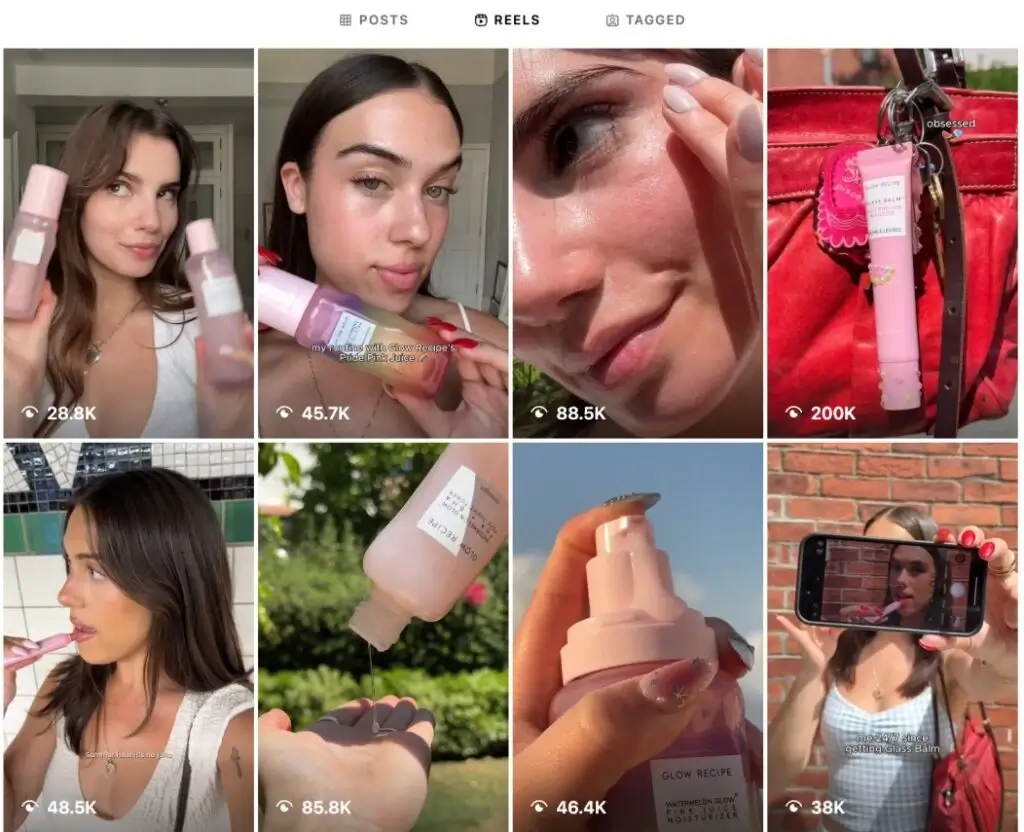

4. Posting for the sake of it
Many businesses fall into the trap of creating content simply to have something to post. Although consistency is great, content that lacks purpose will result in lost followers and a low engagement rate. Every reel should have a purpose and provide value to the viewer, so less is definitely more when it comes to posting video content.
Example: Look at how @gymshark handles this. They don’t post every day just to post. Each video has a purpose from product drops to workout motivation or behind-the-scenes athlete stories. Fewer, better reels > daily noise.
5. Not following trends
Social media is full of trends that spike interest in certain topics. From audio tracks to fun challenges, these popular video styles are bound to see a spike in engagement. If your business is not continually looking out for opportunities to partake in current social media trends, it can make your content appear outdated and irrelevant.
Example: @ryanair is a masterclass in riding trends without losing brand identity. They use trending audio and TikTok humor while still pushing flight promos. The result? Engagement gold.
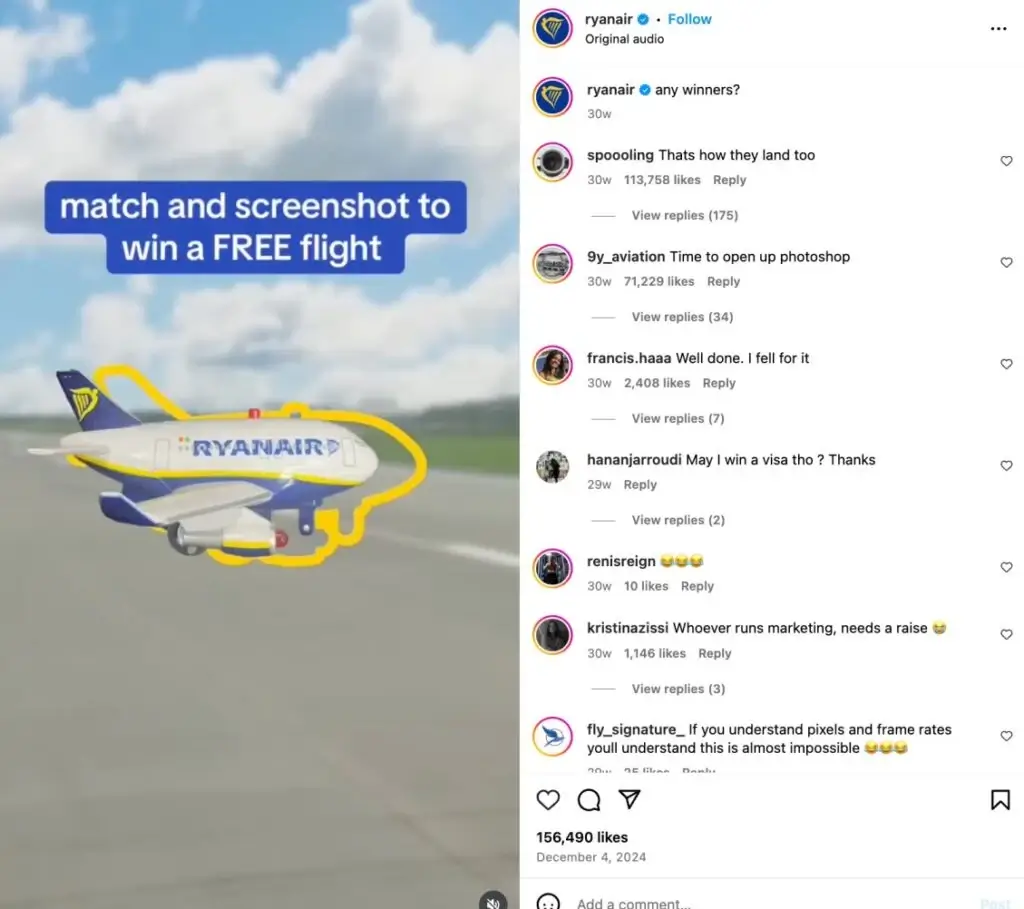

6. Failing to engage viewers
You can’t just broadcast. Reels should feel like a conversation. That means using strong CTAs, encouraging comments, or teasing more content to come.
Example: @olaplex often ends videos with questions like “Which product saved your hair?” or “What’s your biggest hair concern?” This not only boosts comments but also gives them UGC ideas and community insight.
How to Boost Your Affiliate Marketing Reel Views
Now that we’ve broken down what’s not working, let’s talk about how to fix it.
Avoiding common mistakes is a solid first step. However, if you truly want your Reels to stand out, you need a strategy that’s tailored to how people actually scroll, watch, and engage today.
Here are a few smart, tactical ways to keep viewers watching, and clicking. Plus examples from brands that are absolutely crushing the short-form video game on Instagram.
Keep videos under 10 seconds
For affiliate content, shorter Reels tend to perform better, especially when the product or promo is introduced right away and the value is crystal clear.
That’s why short, snappy videos with a strong hook are winning. They drop you right into the action and deliver the message before viewers get the itch to scroll away.
Take this quick Instagram Reel from Gymshark and KFC. It’s only a few seconds long, but it immediately lands the punchline — a light-hearted, unexpected brand collab that uses humor to stay memorable. You don’t need a 60-second product breakdown. You need a vibe, a hook, and a clear message.
Jump on social media trends
Social media trends are called trends for a reason — they reflect what people are actually watching, sharing, and talking about right now. Jumping on a trend isn’t about being gimmicky — it’s about showing your audience that your brand is paying attention and part of the culture.
Whether it’s a viral audio clip, a niche office challenge, or creators visiting the latest trending food spot, finding a clever way to join in can make your content feel more relatable — and your brand more human.
The trick? Don’t just copy the trend. Remix it to match your brand voice. That’s what makes it stick.
For example, Aldi jumped on the Dubai chocolate trend. As everyone rushed to try it for themselves following the social media craze, the unique chocolate bar flavour sold out at stockists. Aldi saw their opportunity to launch a new product in the lead-up to summer that put their own twist on the social media trend.
Affiliate Reels that encourage replies (“Which one would you buy?”, “Tag someone who needs this”) often get more reach, and more reach means more potential clicks.
The example below shows an Instagram Reel rolled out by ASOS. The video may not have been gripping on its own, but paired with the caption, it generated a lot of interest. Viewers were given an incentive to engage with the post that in turn expanded the reach of the post.
Wrapping up: What Affiliate Cretors Can Learn from Big Brands
You don’t need a giant production budget or a social media team to win with Reels. Just play smart in the first 3 seconds.
The same tactics used by big-name brands can (and should!) be borrowed by affiliate creators: start with a bold hook, keep it visual, and use captions to stay scroll-proof. Trends aren’t just for aesthetics — they’re tools for reach. And your call to action? It should feel more like a conversation than a pitch.
Reels are the performance format for today’s affiliate marketers. Whether you’re linking through LTK, TikTok Shop, or your brand’s own custom links via Tapfiliate, the right format makes all the difference.
So next time you hit record, remember: you’ve got three seconds. Make them count.
Plan to start your own affiliate program?
🚀 Try Tapfiliate free for 14 days!
